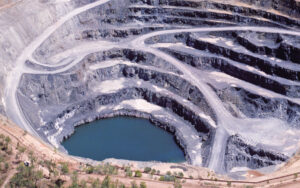Everything you need to know about wastewater aeration systems

Wastewater aeration New South Wales is an important process that happens when air is added to wastewater directly to allow aerobic biodegradation of pollutants in wastewater. Aeration is an important component of wastewater treatment.
Aeration is a natural method of removing pollutants from wastewater. The chemicals that are used to treat water with other treatment systems are harmful especially when used in high amounts. The aeration process doesn’t pose any harm to the environment, animals, plants and people.
Aeration is very important because it is economically viable, highly effective and great for the environment compared to other wastewater treatment options. When aeration occurs, oxygen is provided to the bacteria to treat and stabilise the water. The bacteria need oxygen to go through the biodegradation process. When oxygen is supplied to the bacteria, it will break down the organic matter that is comprised of carbon into carbon dioxide and water.
Types of wastewater aeration systems
There are three main types of aeration systems that treatment plants can use: a diffused bubble aerator, a packed tower aerator and a spray aerator. It is very important to understand the differences between these aerators because each aerator functions differently and comes with its own sets of benefits that you might want to consider before making a decision.
- The packed tower wastewater aerator
Packed tower aerators are systems that consist of a tower that is filled with packing material. The towers can be up to ten feet tall and this means that you will need ample space if you want to use these wastewater aeration systems. The packing material that is contained inside the tower can be between half an inch to three inches and can consist of small pieces of ceramic or plastic. Whilst different materials can be used with this aeration system, there is no benefit towards using any one material over the other.
The main benefits of using the packed tower aerator include easy maintenance, the ability to control the efficiency of the system directly and a high level of effectiveness of the systems at getting rid of wastewater contaminants.
- Diffused bubble aerator
This type of aerator is likely the most popular aeration system that consists of a lot of chambers as well as an effective diffuser that blows air through. The diffuser creates small bubbles that flow in each chamber and the bubbles carry the chemicals and contaminants that you are going to remove.
The diffused bubble aerator can effectively be used with deep tanks, offer better efficiency than other types of wastewater aerators, have a flexible design, and the blower is also easy to manage.
- Spray aerators
These aerators are designed to get rid of small amounts of volatile contaminants. When you use this system, water will enter the top of the system before it materialises from spray heads in a fine mist.
This type of wastewater aeration New South Wales system is effective at removing volatile contaminants like radon. It is a simplistic system that is very easy to maintain. It helps to oxidise iron and manganese. It effectively increases the amount of oxygen dissolved in the water.




